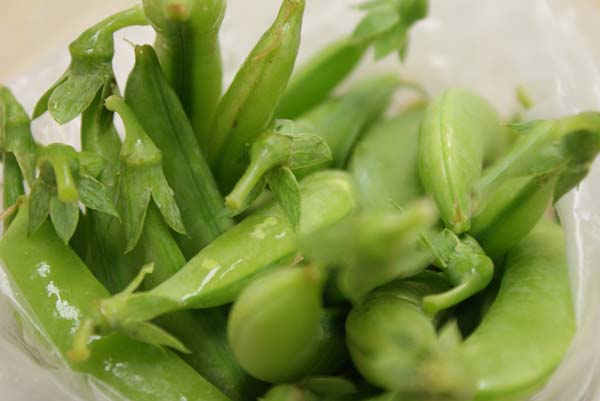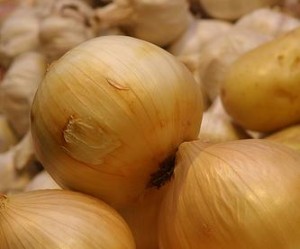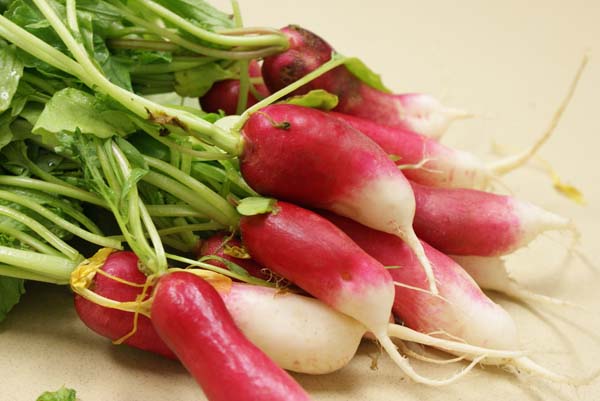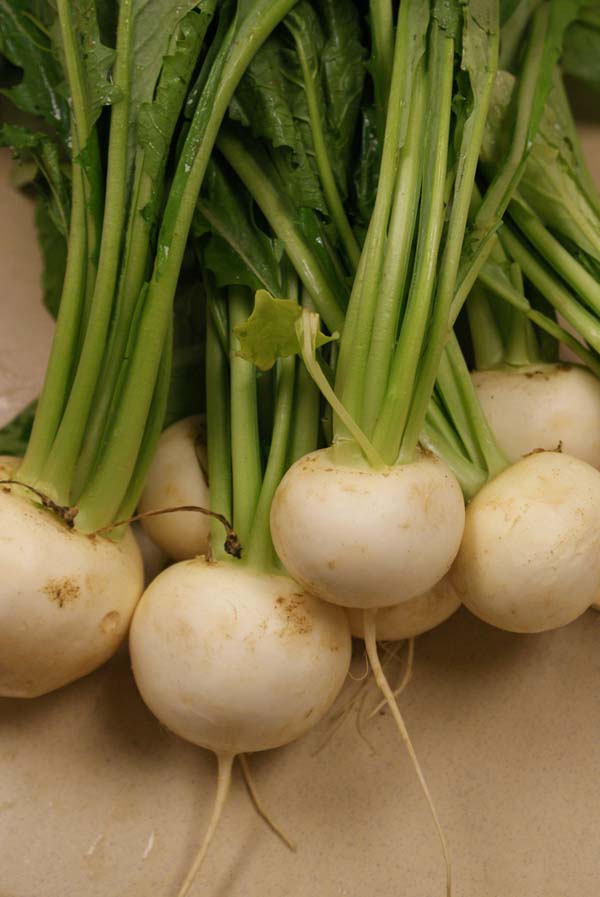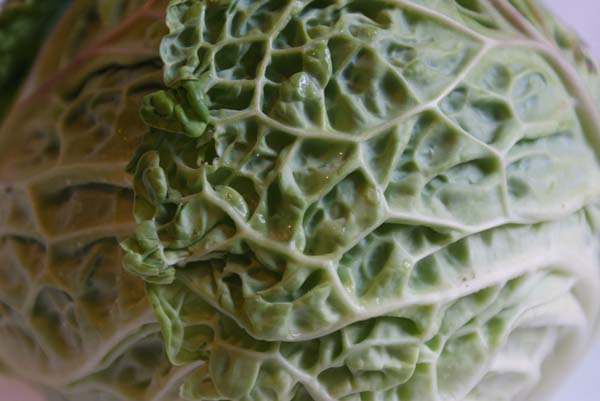
There are three major types of cabbage: green, red and Savoy.
The color of green cabbage ranges from pale to dark green while red cabbage has leaves that are either crimson or purple with white veins running through. Both green and red cabbage have smooth textured leaves. The leaves of Savoy cabbage are more ruffled and yellowish-green in color. Savoy cabbage generally has a more delicate taste and texture than its counterparts.
Nutrition:
1 cup, chopped (89 grams) has 22 calories 0 fat, 2 g fiber and 1 g protein. Cabbage is an excellent source of vitamin C. It is also a very good source of fiber, manganese, folate, vitamin B6, potassium, and omega-3 fatty acids.
Storage:
Keeping cabbage cold will keep it fresh and help it retain its vitamin C content. Put the whole head in a plastic bag in the crisper of your refrigerator. Red and green cabbage will keep this way for about 2 weeks while Savoy cabbage will keep for about 1 week.
If you need to store a partial head of cabbage, cover it tightly with plastic wrap and refrigerate. Use within a couple of days to retain nutrition.
Origin:
Cabbage has a long history of use both as a food and a medicine. It was developed from wild cabbage, a vegetable that was closer in appearance to collards and kale since it was composed of leaves that did not form a head.
Cooking tips:
Red and green cabbage are similar flavored and can be used raw in salads or cooked. Because the pigment of the red cabbage may color other foods, the green cabbage is a better choice for slaw and for cabbage rolls.
If you notice any signs of worms or insects, which sometimes appears in organically grown cabbage, soak the head in salt water or vinegar water for 15-20 minutes first. To preserve its vitamin C content, cut and wash the cabbage right before cooking or eating it. Since phytonutrients in the cabbage react with carbon steel and turn the leaves black, use a stainless steel knife to cut.
For an impromptu quick version of stuffed cabbage, spoon some leftovers such as rice salad or a vegetable mixture onto the center of a cabbage leaf and roll into a neat little package. Bake in medium heat oven until hot. Braise red cabbage with a chopped apple and red wine.
Combine shredded red and white cabbage with fresh lemon juice, olive oil, and seasonings such as turmeric, cumin, coriander and black pepper to make coleslaw with an Indian twist.
Sauté cabbage and onions and serve over cooked buckwheat for a hardy side dish.
Use shredded raw cabbage as a garnish for sandwiches.
Equivalents:
1 medium head = 1.25 – 1.5 lbs
1 lb raw = 4 cups shredded
1 lb cooked = 1.5 – 2 cups shredded
Recipes
